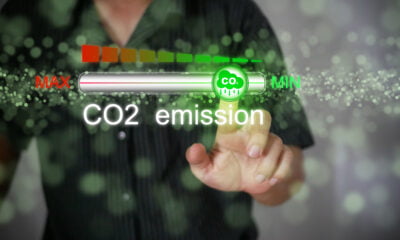

Energy
Your Ultimate Guide To Choosing The Best Energy Saving Electricity Tariffs
There are a lot of things that we need to know about our carbon footprint. Our electricity production plays a huge role in our carbon footprint.
If you are serious about climate change, then this is more important than ever. Our current carbon footprint is now 60% of the total ecological footprint. It will get worse if we don’t find ways to use electricity more efficiently.
Electricity tariffs are one way that communities are lowering the carbon footprint. An electricity tariff is the amount of money frame that an electric supplier charges for supplying electricity to the various types of consumers. In other words, it means the method in which you are charged for consuming electrical power.
The EPA has talked about green tariffs. They are a way to discourage excess electricity use, which raises the carbon footprint. Electricity tariffs are an example.
However, you might now always appreciate them as a consumer, until they teach you how to use less electricity. Electric suppliers use the money gained from these tariffs to cover the production cost, the supply cost, and the profit.
Choosing the Right Electricity Tariff for the Planet
When choosing electricity tariff, there are certain factors you need to consider, including the type of load you require, the maximum load, the time you need it, the power factor of the load, and the amount of energy you use. This is important to understand until you turn to a renewable energy source.
Keep in mind that choosing the right tariff will help reduce the amount of money that you pay to your supplier. It can also go a long way towards reducing your carbon footprint.
To choose the right Singapore tariff, you need to know the electric tariffs that are there and how they work. This article explains the various types of electricity tariffs to help you choose the right one.
Non-Standard Plan Tariff
The non-standard tariff allows you to enjoy different rates depending on your usage time. If you switch on your power at peak hours, you will be charged high rates compared to off-peak periods.
For example, if you use your appliances from 7 am to 7 pm, you might be charged 20 cents/kWh but if you use your appliances from 7 pm to 7 am, the charges may reduce to 15 cents/kWh.
Different electric retailers have different definitions of peak and off-peak hours. You can check with your retailer or power supplier to be sure of their peak hours.
Discount Off Tariff
In this tariff, you are guaranteed a lower rate than the regulated tariff irrespective of the market. You will get lower prices, whether the cost of power falls or increase.
This plan is best, especially if you don’t want to monitor the market for changes in electricity costs regularly.
Single Rate Tariffs
In Single rate electric tariff, you will be charged at the same rate at all times of the day. There are no peak or off-peak periods. This tariff is cheaper compared to peak tariffs.
Single rate tariffs can be your best choice if you are usually at home during weekdays and you like using your electric appliance mostly on weekdays.
This tariff can also be referred to as a flat rate, anytime rate, and peak rate.
Controlled Load Tariffs
This tariff is mainly charged on high-power consuming appliances such as water heaters. This appliance has a separate charging rate and meter.
These appliances can be run during the off-peak periods, for instance, at night at lower rates. You can go for this tariff if you have high-energy consuming appliances.
Depending on your locality, this tariff can also be referred to as Tariff 31 and Tariff 33. In your bill, your controlled load may be referred to as a dedicated circuit.
Demand Tariffs
In demand tariff, you will be charged extra charges depending on how intensively you use electricity at a given time rather than how long you use power.
In simple terms, you will be charged higher demand charges if you have many appliances on at the same time.
Demand charges can be charged in different ways. Some of them include;
- Calculating the mean of peak demands over a given time
- The highest peak demand over a given period
- Different peak demand rates at different periods
Before selecting the plan that is best for you, you should understand your household or business. Know your patterns of electric consumption, the type of appliances that you have, and the best time to use them.
Keep in mind that different electricity plans will deliver diverse benefits based on how you use electricity.
Electricity Tariffs Can Help Lower the Carbon Footprint
There are a lot of ways that we can reduce our carbon footprint. Lowering our electricity usage is a good example. You will need to choose the right electricity tariffs.


 Environment10 months ago
Environment10 months agoAre Polymer Banknotes: an Eco-Friendly Trend or a Groundswell?

 Environment12 months ago
Environment12 months agoEco-Friendly Home Improvements: Top 7 Upgrades for 2025

 Features9 months ago
Features9 months agoEco-Friendly Cryptocurrencies: Sustainable Investment Choices

 Features11 months ago
Features11 months agoEco-Friendly Crypto Traders Must Find the Right Exchange





























